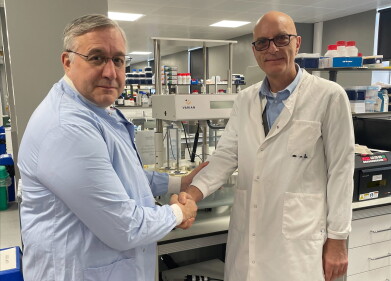News
What is Ice Nucleation?
Dec 21 2015
Ecosystems are incredibly sensitive, which means that when something is thrown off course the consequences can be dire. When it comes to plants, fauna is burdened with a myriad of environmental problems. Ice propagation is one of the most prominent causes for concern, with scientists continually investing time and money into combating the problem.
So what exactly is ice propagation? And why has it got environmental scientists so concerned? Read on as we take a closer look at the issue, and what steps are being taken to manage it.
Ice crystal embryos snap freeze from the inside, out
As the name suggests, ice nucleation is caused when plants are forced to endure severe temperatures. These primarily arrive in spring, when unusually chilly weather wreaks havoc on newly emerging foliage. The process of ice nucleation occurs when small ice crystal embryos form on membrane proteins that act as nucleation sites. These facilitate the aligning of water molecules, which promotes freezing. One ice crystals have formed plants are burdened with a myriad of growth implications and tissue damage. For farmers and agricultural producers, ice nucleation can be devastating on crops. This leads to a follow on effect in the form of increased consumer prices.
New research sparks new hope for combating ice nucleation
For more information on new research into ice nucleation, ‘Thermal Imaging Cameras Help Researchers Study Ice Nucleation and Ice Propagation in Plants’ is an insightful article. It explores the complex nature of ice nucleation, and the various methods scientists are using to research and monitor the problem. Thermal imaging cameras are the latest technology to emerge, offering scientists new insights on how plants freeze in the first place, and what can be done to protect foliage against the harsh weather.
Michael Wisniewski and David Livingston, researchers at the Agricultural Research Service of the US Department of Agriculture explain, “With these thermal imagers, we can determine the primary sites of ice formation in plants, how ice propagates and the presence of ice barriers. The use of high-resolution thermal imaging allows us to visualise the many adaptations that have evolved in plants, which directly or indirectly impact the freezing process and ultimately enable a plant to survive frost events. With a thermal imaging camera, we can see where active sites of ice nucleation are located, and how ice formation initiates and spreads into the surrounding tissues.”
Image via Flickr Creative Commons. Photo credits: Nick J Nixon
Digital Edition
ILM 50.2 March 2025
March 2025
Chromatography Articles - Effects of small deviations in flow rate on GPC/SEC results Mass Spectrometry & Spectroscopy Articles - Waiting for the present to catch up to the future: A bette...
View all digital editions
Events
Apr 02 2025 Saigon, Vietnam
Apr 09 2025 Tokyo, Japan
Apr 22 2025 Hammamet, Tunisia
Apr 22 2025 Kintex, South Korea
Analytica Anacon India & IndiaLabExpo
Apr 23 2025 Mumbai, India



















